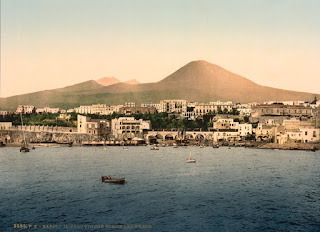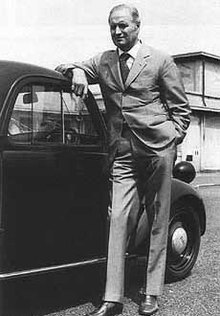Neapolitan who snubbed Napoleon wrote 37 operas
 |
| Niccolò Zingarelli was one of the most successful composers of his time |
His success made him one of the principal composers of opera and religious music of his time. At various points in his career, he was maestro di cappella - music director - at Milan Cathedral, choir master at the Sistine Chapel and director of the Naples Conservatory.
Many of Zingarelli’s operas were written for Teatro alla Scala in Milan. Early in his career he worked in Paris, which held him in good stead later when he was arrested after refusing to conduct a hymn for the newly-born son of the Emperor Napoleon, who at the time was the self-proclaimed King of Italy.
Sometimes known as Nicola, the young Zingarelli studied from the age of seven at the Conservatorio di Santa Maria di Loreto, which was the original conservatory of Naples, dating back to 1537. He was tutored by Fedele Fenaroli, whose pupils also included Domenico Cimarosa and, later, Giuseppe Verdi, and also by Alessandro Speranza.
As a young man, Zingarelli earned a living as a violinist, while also composing. His first opera, Montezuma, was successfully produced at Teatro di San Carlo in Naples in 1781. Four years later Alsinda was staged at La Scala, the first of a series of his operas produced there until 1803.
 |
| Zingarelli refused to conduct a service for Napoleon's new son at the Sistine Chapel |
From there he returned to Milan, where in 1793 he became music director at the Duomo.
A year later, Zingarelli moved again, to take up the post of maestro di cappella at the Basilica della Santa Casa in Loreto, in Marche, an important and prestigious position at the time. He stayed there for 10 years, composing a large number of sacred works, at the same time continuing to write operas for La Scala and other theatres.
When he left Loreto, it was to become music director and choir master at the Sistine Chapel in Rome, where he composed cantatas on poems by Torquato Tasso and Dante.
It was in Rome that he wrote Berenice (1811), an opera that achieved great popularity, although two operas he composed for La Scala, Il mercato di Monfregoso (1792), based on a play by Carlo Goldoni, and Giulietta e Romeo (1796), inspired by William Shakespeare’s play, are said to be his finest work.
It was in 1811 that he was asked to conduct a Te Deum - a short religious service, held to bless an event or give thanks, which is based on the Latin hymn of the same name - for Napoleon, to celebrate the emperor’s new-born son. As an Italian patriot, however, he felt he could not and, as a consequence of his public refusal, was arrested.
As it happened, though, Napoleon was a fan of his music and not only allowed Zingarelli to go free, he also awarded him a state pension.
In 1813, he left Rome to return to Naples, where he became director of the Conservatorio di San Sebastiano, before moving to the current site, the Conservatorio di San Pietro a Majella, in 1826. By then, he had also replaced Giovanni Paisiello as choir master of Naples Cathedral, a position he held until his death, in 1837, in Torre del Greco, just along the coast.
| The huge Basilica della Santa Casa sits at the highest point of Loreto and therefore dominates the skyline |
The hill town of Loreto, about 5km (3 miles) inland from the Adriatic coast about 25km (16 miles) south of Ancona and a similar distance north of Civitanova Marche, is easily identified from a distance away by the dome of the basilica, which stands taller than anything else in the area. The Basilica della Santa Casa takes its name from the rustic stone cottage that once occupied its site - and indeed is preserved inside the structure of the cathedral - which was said to be the place of refuge to which angels brought the Madonna as a safe haven after the Saracens who had invaded the Holy Land. The beautiful basilica itself is a late Gothic structure upon which Giuliano da Maiano, Giuliano da Sangallo and Donato Bramante all worked at different times. Inside, there are artworks by Luca Signorelli and Lorenzo Lotto, who died there in 1556.
 |
| Torre del Greco was once a thriving upmarket seaside resort, as depicted in this late 19th century postcard |
Torre del Greco was once part of Magna Graecia – Great Greece – in the eighth and seventh centuries BC but its name is thought to originated in the 11th century AD when a Greek hermit was said to have occupied an eight-sided coastal watch tower called Turris Octava. From the 16th century it became popular with wealthy families and even Italian nobility, who built elaborate summer palaces there. The area is largely run down these days but in the 19th century and early 20th century Torre del Greco enjoyed its peak years as a resort to which wealthy Italians flocked, both to enjoy the sea air and as a point from which to scale Vesuvius via a funicular railway. A thriving café scene developed, and the art nouveau Gran Caffè Palumbo became famous across the country. Since the 17th century it has been a major producer of coral jewellery.
More reading:
Why Carlo Goldoni is seen as the greatest Venetian dramatist
The story of the troubled Renaissance poet Torquato Tasso
How Domenico Cimarosa developed the model for comic opera
Also on this day:
1951: The birth of singer-songwriter Francesco De Gregori
1960: The birth of businesswoman Daniela Riccardi
1963: The birth of politician and journalist Irene Pivetti
Home






















